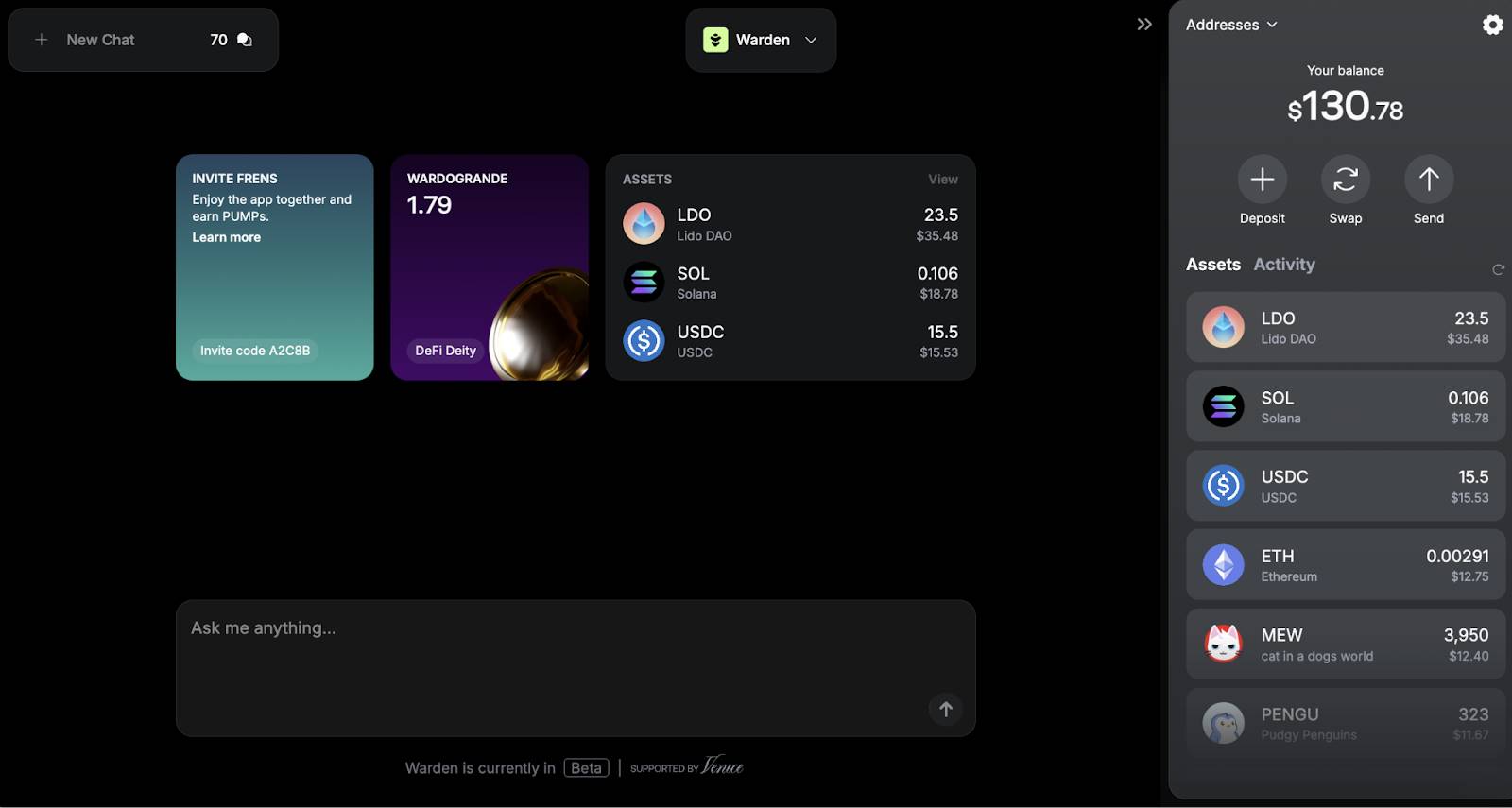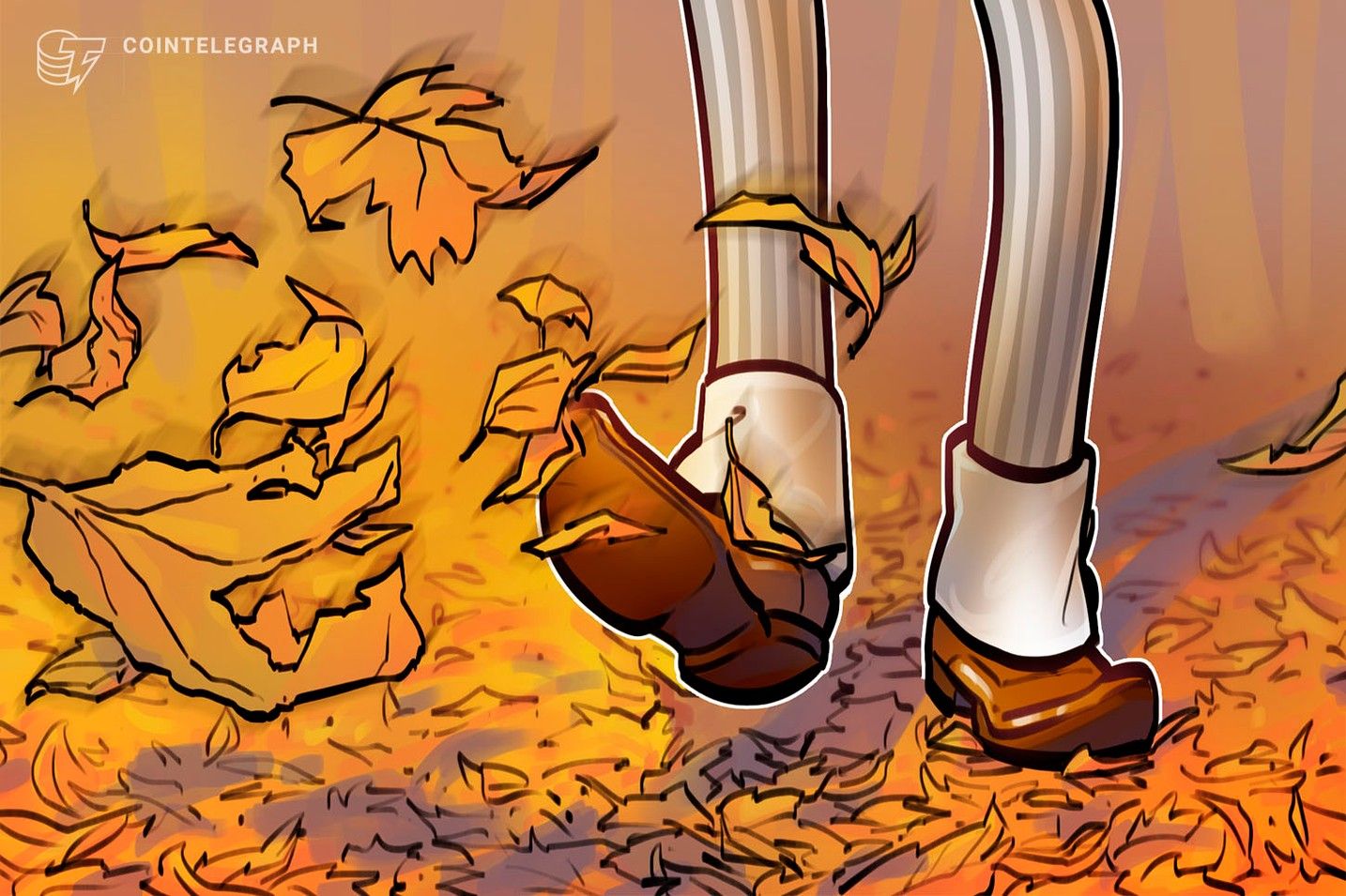Tom Lee Exclusive Interview: The Bull Market Has Just Begun, Ethereum May Hit $12,000 Next Year
Video: Fundstrat
Compiled/Edited by: Yuliya, PANews
Original Title: Exclusive Interview with Tom Lee: Market Volatility but the Bull Market Is Far from Over, Ethereum to Reach $12,000 Next January
In an era when most analysts hold cautious or even pessimistic views on the market, Tom Lee, Chairman of BitMine and senior strategist, has voiced a distinctly bullish tone. In this Fundstrat interview, Tom Lee delves into the current macro cycle, the AI supercycle, changes in market sentiment, inflation risks, and the future trajectory of crypto assets. Tom Lee believes the market is at a critical juncture of a "supercycle," and investors' misjudgments regarding macro signals, yield curves, inflation logic, and the AI industry cycle are leading to systemic mismatches. He not only predicts the S&P 500 will reach 7,000 to 7,500 points by year-end, but also points out that Ethereum and Bitcoin are poised for a strong rebound. PANews has compiled and translated this conversation.
We Are in a Misunderstood "Supercycle"
Host: Tom, welcome. Let's first look back: over the past three years, the market has risen by more than 80%. You've consistently been one of the few bullish voices. In your view, from 2023 to 2024 and even this year, where did the 90% of analysts and bears go wrong?
Tom Lee: 80% of trading essentially depends on the macro environment. Over the past three years, investors have almost all seen themselves as "macro traders," but they've made two key mistakes.
-
First, they put too much faith in the "scientific" nature of the yield curve. When the yield curve inverted, everyone thought it was a signal of recession. But as we've explained at Fundstrat, this inversion was caused by inflation expectations—short-term inflation was high, so short-term nominal rates should be higher, but in the long run, they would fall. That's the real reason for the curve inversion.
-
Second, our generation has never truly experienced inflation, so everyone uses the "stagflation" of the 1970s as a template, without realizing that we don't have the tricky conditions today to create that kind of persistent inflation.
Therefore, people are structurally bearish, believing "an inverted curve means recession, stagflation is coming." They completely missed the fact that companies are dynamically adjusting their business models in real time to cope with inflation and the Fed's tightening policies, and ultimately delivered excellent earnings. In the stock market, time is the best friend of great companies and the worst enemy of mediocre ones—this holds true whether in periods of inflation or bull markets.
Host: I noticed that you think the current market environment is somewhat similar to 2022, when almost everyone turned bearish, and now, as anxiety returns to the market, you're once again standing on the bullish side. What do you think is the biggest misunderstanding people have about the current market structure?
Tom Lee: I think the hardest thing for people to understand and grasp is the "supercycle." We turned structurally bullish in 2009 because our cycle research showed a long-term bull market was beginning. In 2018, we identified two future supercycles:
-
Millennials: They are entering their prime working years, which will be a powerful tailwind for the next 20 years.
-
Global shortage of prime-age labor: This may sound bland, but it's this factor that laid the foundation for the boom in artificial intelligence (AI).
Why Is the AI Boom Fundamentally Different from the Internet Bubble?
Tom Lee: We are in a boom driven by AI, which is pushing asset prices higher. This is actually a textbook case: from 1991 to 1999, there was a labor shortage and tech stocks boomed; from 1948 to 1967, again a labor shortage, and tech stocks prospered. The current AI wave is repeating this pattern.
But the problem is, many people see high Sharpe ratio stocks as a bubble and try to short companies like Nvidia, but this view may be biased. They forget that today's AI industry is completely different from the internet of the 1990s. Back then, the internet was just a "capital expenditure frenzy," while AI is a "gain of function."
Host: Many people compare the current AI boom to the late 1990s internet bubble, even likening Nvidia to Cisco back then. You experienced that era firsthand—what do you see as the fundamental differences?
Tom Lee: It's an interesting comparison, but fundamentally flawed. The life cycles of telecom capital expenditure (Cisco) and GPUs (Nvidia) are completely different.
People forget that in the late 1990s, the core of the capital expenditure boom was telecom—laying fiber optics, not the internet itself. At the time, telecom spending in emerging markets was tied to GDP growth, and this boom spread to the US, leading companies like Quest to lay fiber along railways and under streets, while Global Crossing laid submarine cables worldwide. The problem was, the internet's consumption of fiber was far slower than the rate it was being laid; at the peak, nearly 99% of fiber was unused "dark fiber."
Today, the situation is completely the opposite. Demand for Nvidia chips remains strong, and current GPU utilization is nearly 100%—they are used immediately, fully meeting market demand. Supply of Nvidia chips can't keep up with demand; even if capacity increases by 50%, all chips will still be quickly sold out. The industry currently faces three major constraints: Nvidia chip supply, related silicon materials, and energy supply. These factors together limit the speed of market expansion. At the same time, the functional improvement of AI technology is far outpacing expectations, further intensifying hardware demand. However, capital expenditure has not kept up with this trend, and the industry as a whole is still in a state of under-supply. In other words, AI capital expenditure is still "lagging behind the innovation process."
Year-End Market Forecast and the Potential of Cryptocurrencies
Host: You've mentioned several times that the S&P 500 could reach 7,000 or even 7,500 points by year-end. In the year-end rally you foresee, which sector do you think will bring the biggest surprise?
Tom Lee: First, in the past few weeks, market sentiment has become quite pessimistic. Because the government shutdown temporarily withdrew funds from the economy, and the Treasury didn't allocate payments, liquidity contracted and the stock market wobbled. Whenever the S&P 500 drops 2-3%, or AI stocks fall 5%, people become very cautious. I think the foundation for bullish sentiment is very shaky—everyone always feels the market top is coming. But I want to emphasize: when everyone thinks the top is near, the top can't form. The reason the internet bubble top formed was because at that time, no one thought stocks would fall.
Second, you have to remember that the market has performed strongly over the past six months, but people's positions are seriously misaligned, which means the potential demand for stocks is huge. In April this year, due to tariff issues, many economists declared a recession was imminent, and institutional investors traded accordingly—they were actually preparing for a massive bear market. This kind of mispositioning can't be corrected in just six months.
Now, as we head into year-end, 80% of institutional fund managers are underperforming the benchmark index—the worst performance in 30 years. They only have 10 weeks left to catch up, which means they'll have to buy stocks.
So, I think several things will happen before year-end:
-
AI trades will make a strong comeback: Despite recent wobbles, the long-term outlook for AI remains unaffected, and companies are expected to make major announcements as they look ahead to 2026.
-
Financials and small caps: If the Fed cuts rates in December, confirming a shift to an easing cycle, this will be extremely positive for financials and small caps.
-
Cryptocurrencies: Cryptos are highly correlated with tech stocks, financials, and small caps. Therefore, I think we'll also see a large-scale crypto rebound.
Host: Since you mentioned cryptocurrencies, where do you think Bitcoin will be by year-end?
Tom Lee: Expectations for Bitcoin have come down, partly because it's been consolidating sideways, and some early Bitcoin holders (OGs) sold when the price exceeded $100,000. But it's still a severely under-allocated asset class. I think by year-end, Bitcoin has the potential to reach the high hundred thousands, possibly even $200,000.
But for me, it's even more obvious that Ethereum could see huge gains before year-end. Even "Wood Sister" Cathie Wood wrote that stablecoins and tokenized gold are eating into Bitcoin demand. And both stablecoins and tokenized gold run on smart contract blockchains like Ethereum. In addition, Wall Street is actively positioning itself—BlackRock CEO Larry Fink wants to tokenize everything on the blockchain. This means expectations for Ethereum's growth are rising. Our technical strategist Mark Newton believes that by January next year, Ethereum could reach $9,000 to $12,000. I think this prediction is reasonable, meaning Ethereum's price could more than double from now to year-end or next January.
Overestimated Inflation and Manageable Geopolitics
Host: You mentioned the Fear & Greed Index closed at 21 last Friday, in the "extreme fear" range; CME's FedWatch tool shows a 70% probability of a rate cut in December. Do you think this performance pressure will also drive institutional funds into cryptocurrencies like Ethereum and Bitcoin?
Tom Lee: Yes, I think it will. Over the past three years, the S&P 500 has posted double-digit gains for three consecutive years, possibly exceeding 20% this year. And at the end of 2022, almost no one was bullish. At that time, wealthy individuals and hedge funds advised clients to move to cash or alternative assets—private equity, private credit, venture capital—but all these asset classes were crushed by the S&P. This "mismatch" is now backfiring on institutions.
Therefore, 2026 shouldn't be seen as a bear market year either. On the contrary, investors will chase high-growth stocks like Nvidia again, because their earnings are still growing by over 50%.
Meanwhile, the crypto market will also benefit. Although the market generally believes Bitcoin's four-year cycle is ending and a correction is due, this judgment ignores the macro environment. But they forget the Fed is about to start cutting rates. Our research shows that the ISM Manufacturing Index is even more correlated with Bitcoin prices than monetary policy. Bitcoin is unlikely to peak before the ISM index reaches 60.
Currently, the crypto market is constrained by insufficient monetary liquidity. The Fed's quantitative tightening (QT) is expected to end in December, but has not yet clearly signaled easing, leaving investors confused. However, as these macro factors become clearer, the crypto market is expected to perform more positively.
Host: In your view, what is the most overestimated risk in the current market?
Tom Lee: I think the most overestimated risk is the "return of inflation." Too many people think monetary easing or GDP growth will create inflation, but inflation is a mysterious thing. We've had years of easy money with no inflation. Now, the labor market is cooling, the housing market is weakening, and the three main drivers of inflation—housing, labor costs, and goods—none are rising. I even heard a Fed official say core services inflation is picking up, but after checking, that's completely wrong. PCE core services inflation is currently running at 3.2%, below the long-term average of 3.6%. So, the view that inflation is strengthening is incorrect.
Host: If an unexpected event occurs, such as geopolitics, war, or supply chain issues causing oil prices to spike, would that be a variable that would turn you bearish?
Tom Lee: That possibility does exist. If oil prices rise high enough to cause a shock. Looking back at the last three non-Fed-induced economic shocks, they were all commodity price shocks. But for oil to become a heavy burden on households, prices need to reach a very high level. In recent years, the energy intensity of the economy has actually declined.
So, oil prices would need to approach $200 to cause such a shock. We've been close to $100 oil before, but it didn't cause a shock. You really need oil prices to triple. This summer, the US bombed Iran's nuclear facilities, and some predicted oil would soar to $200, but prices barely moved.
Host: Yes, geopolitics has never dragged down the US economy or stock market for long. We've had localized shocks, but never a true recession or major crash in the US due to geopolitics.
Tom Lee: Absolutely right. Geopolitics can destroy unstable economies. But in the US, the key question is: will corporate earnings collapse due to geopolitical tensions? If not, then we shouldn't use geopolitics as the main reason to predict a bear market.
How to Overcome Fear and Greed
Host: If Fed Chair Powell unexpectedly doesn't cut rates in December, how will the market react?
Tom Lee: In the short term, that would be negative news. However, while Chair Powell has done a good job, he's not popular in the current administration. If he doesn't cut rates in December, the White House may accelerate plans to replace the Fed Chair. Once replaced, a "shadow Fed" could emerge, and this new "shadow Fed" would set its own monetary policy. So, I don't think the negative impact would last long, because the new chair may not be constrained by internal Fed voices, and the way monetary policy is implemented could change.
Host: I have many friends who've held cash since 2022 and are now very conflicted—afraid the market is too high, but also afraid of missing out. What's your advice for this dilemma?
Tom Lee: That's a great question, because many people face this dilemma. When investors sell stocks, they actually have to make two decisions: first, to sell, and second, when to re-enter at a better price. If you can't be sure you'll tactically re-enter, panic selling could mean missing out on long-term compounding returns. Investors should avoid panic selling stocks due to market volatility—every market crisis is actually an investment opportunity, not a time to sell.
Second, for investors who have already missed market opportunities, I suggest returning to the market gradually through "dollar-cost averaging," rather than investing all at once. Divide your investment over 12 months or longer, investing a fixed proportion each month. That way, even if the market falls, you can get a better cost advantage by buying in batches. Don't wait for a market correction to enter, because many investors think the same way, which could lead to further missed opportunities.
Host: How do you view the roles of retail and institutional investors? Some say this bull market is mainly driven by retail investors.
Tom Lee: I'd like to correct a common misconception: retail investors don't perform worse than institutions in the market, especially those with a long-term investment perspective. Many retail investors invest in stocks based on a long-term view, which makes it easier for them to correctly grasp market trends. In contrast, institutional investors, needing to outperform peers in the short term, tend to time the market and may overlook the long-term value of certain stocks. Anyone operating with a long-term perspective can be considered "smart money," and this type of investor is more concentrated among retail investors.
Host: For companies like Palantir with triple-digit P/E ratios, many people think they're too expensive. Under what circumstances do you think a triple-digit P/E is still reasonable for long-term investors?
Tom Lee: I divide companies into two circles: the first circle is companies that aren't profitable but have a 100x P/E (about 40% of the 4,000 listed companies outside the main index)—most of these are bad investments.
The second circle is so-called N=1 companies:
1. These companies are either laying the foundation for a huge long-term story, so they're not profitable now;
2. Or their founders are constantly creating new markets, so current earnings streams don't reflect their future.
Tesla and Palantir are examples. They deserve extremely high multiples because you're discounting their future. If you insist on only paying a 10x P/E for Tesla, you'll have missed the opportunity of the past seven or eight years. You need a different mindset to find these unique, founder-driven companies.
Lessons Learned and Final Advice
Host: Many people say this rally is too concentrated in a few stocks, like Nvidia, which is a huge sign of a bubble. Do you agree?
Tom Lee: AI is a scale business, meaning you need to invest huge amounts of capital. You and I can't create a product in our garage that competes with OpenAI.
Scale industries are like energy or banking. There are only eight major oil companies in the world. If someone said oil is a cyclical business because only eight companies buy oil, we'd think that's absurd. You have to be big enough to drill for oil. AI is the same—it's a scale business. That's what the current market structure shows. Do we really want Nvidia to deal with thousands of small companies? I'd rather they work with those who can deliver results and ensure financial viability. So, I think the current concentration is logical.
Host: Even though you've been in the industry for forty years, what is the most important lesson the market has taught you in the past two years?
Tom Lee: The past two years have shown that the public's "collective misreading/misunderstanding" can last a long time. As we discussed at the beginning, many people were convinced of a recession due to the inverted yield curve, even though company data didn't support it—they preferred to believe their own anchoring. Companies became cautious and adjusted strategies, but earnings remained excellent. Often, when data conflicts with their views, people choose to believe themselves rather than the data.
Fundstrat has remained bullish because we don't cling to our own views—we anchor on earnings, and earnings data ultimately proves everything. People call us "perma-bulls," but earnings themselves have been "permanently rising"—what else can I say? We just follow a different set of data that ultimately drives stock prices.
Distinguish between "conviction" and "stubbornness." Stubbornness is thinking you're smarter than the market; conviction is being firm based on the right things. Remember, in a room full of geniuses, at best you can only be average.
Host: Peter Lynch said, "Far more money has been lost by investors preparing for corrections, or trying to anticipate corrections, than has been lost in corrections themselves." What do you think?
Tom Lee: There are a few contrarian masters in the market, like Peter Lynch, David Tepper, and Stan Druckenmiller, who are good at making decisive moves when market sentiment is low. Take Nvidia as an example: when its stock price dropped to $8, many people were too afraid to buy, and every further 10% drop made investors even more hesitant. Tom Lee believes this kind of emotion-driven stubbornness often stems from a lack of conviction rather than rational judgment.
Host: How do you explain the emotional, rather than fundamental, reactions many investors have when the market falls?
Tom Lee: It's a behavioral issue. "Crisis" is made up of "danger" and "opportunity." Most people only focus on danger in a crisis. When the market falls, people only think about the risks to their portfolio, or believe, "Oh no, I must have missed something, because my great idea should be going up every day."
But in reality, they should see it as an opportunity, because the market always gives you chances. The tariff crisis from February to April this year is a good example. Many people went to the other extreme, thinking we were heading for a recession or that everything was over, but they only saw danger, not opportunity.
In addition, emotions and political bias have a significant impact on market views. Earlier consumer sentiment surveys showed that 66% of respondents leaned Democratic, and these respondents reacted more negatively to the economy, while the stock market can't identify such political affiliation differences. Companies and the market itself are independent of political views—investors need to rise above emotions and political bias. "Fan mentality" and self-esteem in investing can lead to decision-making bias, such as investors tending to bet on their favorite companies or feeling validated when stocks rise and frustrated when they fall. Even machines can't completely eliminate bias, as their design still carries human traits. To better cope with these influences, investors should focus on supercycles and long-term trends, such as Nvidia in AI or Palantir's mission—even if the stock price fluctuates in the short term, it doesn't change their long-term potential.
Host: Finally, if you had to describe the stock market for the next 12 months in one sentence, what would you say?
Tom Lee: I'd say, "Buckle up."
Because in the past six years, the market has risen a lot, but we've experienced four bear markets. That means we go through a bear market almost every year, which will test your resolve. So I think people need to be prepared, because next year will be no different. Remember, in 2025 we dropped 20% at one point, but ended the year up 20%. So keep in mind, this could easily happen again.
Host: Also, for newcomers who entered the market after 2023 and haven't seen a real major correction, what advice do you have?
Tom Lee: First, the market feels great when it's going up, but there will be very long periods of pain ahead, and you'll question yourself. But it's at that time that you most need resolve and conviction. Because the money made investing at the lows is far greater than the money made trying to trade at the highs.
Disclaimer: The content of this article solely reflects the author's opinion and does not represent the platform in any capacity. This article is not intended to serve as a reference for making investment decisions.
You may also like

Morgan Stanley says it’s harvest time as Bitcoin enters ‘fall’ season

Aster Phase Two: From Trading Products to Market Infrastructure
From Perp DEX to privacy public chains, Aster is attempting to make trading itself the new consensus.

Bitget Wallet launches Refer2Earn feature, creating a long-term incentive mechanism
Recently, the world-leading Web3 wallet, Bitget Wallet, has added the Refer2Earn feature to its Earn Center. This is the industry's first long-term incentive mechanism specifically for Web3 wallet users.

